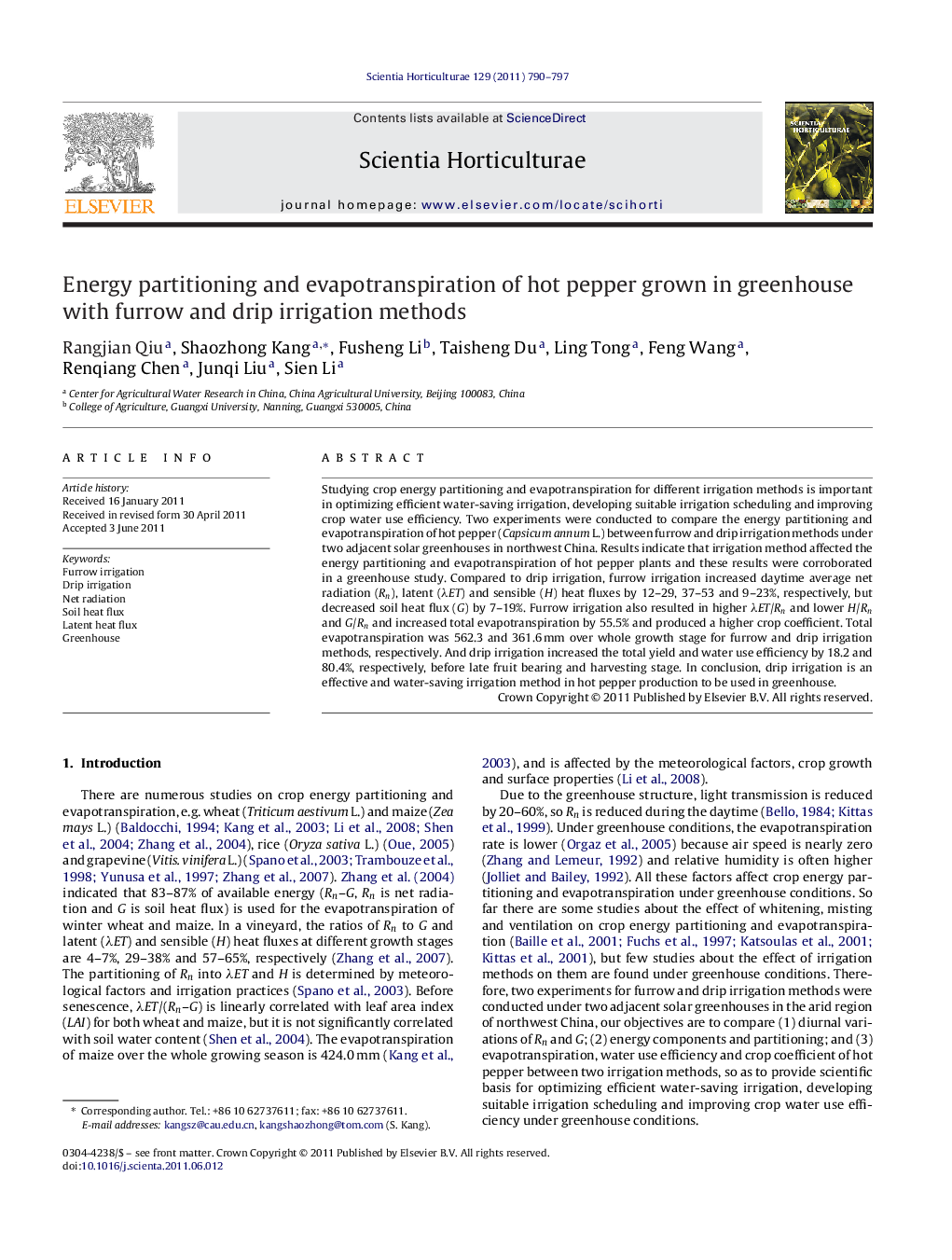| کد مقاله | کد نشریه | سال انتشار | مقاله انگلیسی | نسخه تمام متن |
|---|---|---|---|---|
| 4568025 | 1331286 | 2011 | 8 صفحه PDF | دانلود رایگان |

Studying crop energy partitioning and evapotranspiration for different irrigation methods is important in optimizing efficient water-saving irrigation, developing suitable irrigation scheduling and improving crop water use efficiency. Two experiments were conducted to compare the energy partitioning and evapotranspiration of hot pepper (Capsicum annum L.) between furrow and drip irrigation methods under two adjacent solar greenhouses in northwest China. Results indicate that irrigation method affected the energy partitioning and evapotranspiration of hot pepper plants and these results were corroborated in a greenhouse study. Compared to drip irrigation, furrow irrigation increased daytime average net radiation (Rn), latent (λET) and sensible (H) heat fluxes by 12–29, 37–53 and 9–23%, respectively, but decreased soil heat flux (G) by 7–19%. Furrow irrigation also resulted in higher λET/Rn and lower H/Rn and G/Rn and increased total evapotranspiration by 55.5% and produced a higher crop coefficient. Total evapotranspiration was 562.3 and 361.6 mm over whole growth stage for furrow and drip irrigation methods, respectively. And drip irrigation increased the total yield and water use efficiency by 18.2 and 80.4%, respectively, before late fruit bearing and harvesting stage. In conclusion, drip irrigation is an effective and water-saving irrigation method in hot pepper production to be used in greenhouse.
► Irrigation method affected energy partitioning and evapotranspiration.
► Furrow irrigation increased daytime net radiation (Rn), latent (λET) and sensible (H) heat fluxes, but decreased soil heat flux (G).
► Furrow irrigation increased λET/Rn, but decreased the H/Rn and G/Rn.
► Furrow irrigation had higher total evapotranspiration and crop coefficient than drip irrigation.
Journal: Scientia Horticulturae - Volume 129, Issue 4, 27 July 2011, Pages 790–797